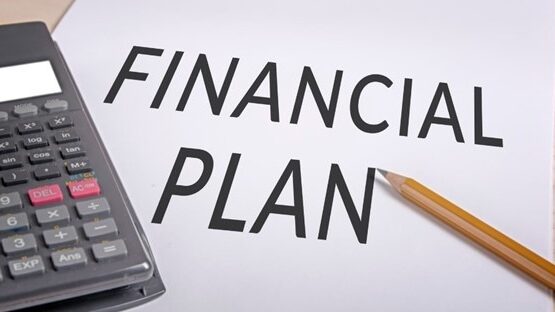
Money. It’s the fuel that powers our dreams, the safety net for life’s surprises, and sometimes, the source of sleepless nights. I remember sitting at my kitchen table a few years ago, staring at a pile of bills, a half-empty coffee mug, and a bank account that felt more like a suggestion than a reality. I had no plan, no direction, and a vague sense of panic. That’s when I realized I needed a personal financial plan—a roadmap to take me from chaos to clarity. If you’re nodding along, feeling a little lost or just ready to take control, this guide is for you. We’ll walk through creating a personal financial plan step by step, with practical advice, real-world examples, and a sprinkle of storytelling to keep it human. Let’s dive in.
Why You Need a Financial Plan (And Why It’s Not Just for the Rich)
A financial plan isn’t just for millionaires or retirees. It’s for anyone who wants to live with intention—whether you’re a college grad drowning in student loans, a parent juggling daycare costs, or someone dreaming of early retirement. A solid plan helps you prioritize, reduce stress, and align your money with your life’s goals. According to a Schwab survey, people with a written financial plan feel more confident and are more likely to achieve their goals. My own turning point came when I realized I was spending more on takeout than saving for a house. A plan gave me clarity and purpose.
Think of a financial plan as a GPS for your money. Without it, you’re driving blind, hoping to stumble upon your destination. With it, you’ve got turn-by-turn directions, even if the road gets bumpy. Ready to start? Let’s break it down.
Step 1: Assess Your Current Financial Situation
Before you can map out where you’re going, you need to know where you stand. This step is like taking a financial selfie—warts and all. It’s not always pretty, but it’s essential.
Start by gathering your financial details: bank statements, credit card balances, loan documents, and pay stubs. I remember my first attempt at this; I found an old credit card bill I’d “forgotten” about with a balance that made my stomach churn. Be honest with yourself. Here’s how to do it:
- Calculate Your Net Worth: List all your assets (savings, investments, property) and subtract your liabilities (debts, loans). This number, positive or negative, is your starting point. Tools like Mint can help you track this easily.
- Track Your Income and Expenses: Review your last three months of spending. Categorize expenses (rent, groceries, Netflix) to spot patterns. Are you spending $200 a month on coffee? No judgment—I’ve been there.
- Check Your Credit Score: Your credit score affects everything from loan rates to job opportunities. Use free services like Credit Karma to get a snapshot.
This step isn’t about beating yourself up; it’s about clarity. When I did this, I discovered I was paying for subscriptions I didn’t use. Canceling them felt like finding free money.
Step 2: Define Your Financial Goals
Goals give your financial plan purpose. Without them, you’re saving for “someday,” which often means never. Your goals should be specific, measurable, and tied to your values. Want to travel the world? Buy a home? Retire at 50? Write it down.
Here’s how to set goals that stick, using the SMART framework:
- Specific: Instead of “save money,” aim for “save $10,000 for a down payment.”
- Measurable: Track progress, like “save $500 a month.”
- Achievable: Be realistic. If you earn $40,000 a year, saving $1 million in five years is a stretch.
- Relevant: Align goals with your life. If you value experiences, prioritize travel over a bigger car.
- Time-bound: Set deadlines, like “pay off $5,000 in credit card debt by December 2026.”
I once set a goal to save $5,000 for a trip to Japan. It felt impossible until I broke it into $200 monthly chunks over two years. Suddenly, it was doable. Split your goals into short-term (1–3 years), mid-term (3–10 years), and long-term (10+ years) to balance immediate needs with big dreams.
Step 3: Create a Budget That Works for You
Budgeting sounds like a chore, but it’s really about freedom—freedom to spend guilt-free on what matters. There are tons of budgeting methods out there, from the 50/30/20 rule to zero-based budgeting. Pick one that fits your lifestyle. Here’s a quick rundown:
- 50/30/20 Rule: Allocate 50% of income to needs (rent, bills), 30% to wants (dining out, hobbies), and 20% to savings or debt repayment. This worked for me when I was starting out because it’s simple.
- Zero-Based Budgeting: Assign every dollar a job, so income minus expenses equals zero. Great for control freaks (no shade—I’m one).
- Envelope System: Use cash for categories like groceries or entertainment. When the envelope’s empty, you’re done spending.
I used the 50/30/20 rule to rein in my spending. By cutting back on “wants” like impulse Amazon purchases, I redirected $100 a month to savings. Apps like YNAB (You Need A Budget) can make this process visual and fun. Track your spending for a month, then adjust. If you’re overspending on dining out, tweak your “wants” category or cook more at home.
Step 4: Build an Emergency Fund
Life loves curveballs—car repairs, medical bills, or a sudden job loss. An emergency fund is your financial airbag. Aim for 3–6 months of living expenses, though even $1,000 is a great start. According to Bankrate, only 44% of Americans can cover a $1,000 emergency without borrowing. Don’t be part of that statistic.
- Where to Save: Use a high-yield savings account for better returns. Check out options from Ally Bank or Marcus by Goldman Sachs.
- How to Build It: Automate small transfers, like $50 per paycheck. I started with $25 a week, and in a year, I had $1,300.
- When to Use It: Only tap it for true emergencies, not for that new iPhone.
My emergency fund saved me when my car broke down last year. Instead of panicking, I paid the $800 repair bill and moved on. Start small, but start now.
Step 5: Tackle Debt Strategically
Debt can feel like a ball and chain, but you can break free with a plan. Two popular methods are the debt snowball (pay smallest debts first for quick wins) and the debt avalanche (pay high-interest debts first to save money). Both work—choose what motivates you.
- Debt Snowball: List debts from smallest to largest. Pay minimums on all but the smallest, which you attack aggressively. I used this to pay off a $2,000 credit card, and the momentum was addicting.
- Debt Avalanche: List debts by interest rate, highest to lowest. Pay minimums on all but the highest-rate debt. This saves more in the long run.
- Consolidation Options: Consider a balance transfer card or personal loan for lower rates. Check LendingTree for options.
When I tackled my $10,000 student loan, I made minimum payments but threw extra cash at a 7% credit card first. Seeing that balance drop felt like a victory lap. If you’re overwhelmed, talk to a nonprofit credit counselor through the National Foundation for Credit Counseling.
Step 6: Save for Retirement
Retirement might feel like a lifetime away, but the earlier you start, the better. Thanks to compound interest, even small contributions grow over time. A $100 monthly investment at a 7% return could grow to over $150,000 in 30 years, per Investor.gov’s compound interest calculator.
- Employer Plans: If your job offers a 401(k) with a match, take it—it’s free money. I maxed out my match and saw my savings grow faster than expected.
- IRAs: Open a Roth or Traditional IRA for tax advantages. Roth IRAs are great for young people because withdrawals are tax-free in retirement.
- Diversify Investments: Consider low-cost index funds or ETFs for long-term growth.
Talk to a financial advisor or use robo-advisors like Betterment to automate investments. My first $1,000 in a Roth IRA felt like planting a seed for future me.
Step 7: Invest for Wealth Building
Once your emergency fund is solid and high-interest debt is under control, it’s time to grow your wealth. Investing isn’t just for Wall Street types—it’s for you, too. Start with low-cost, diversified options like index funds or ETFs.
- Stock Market: Invest in broad-market funds like the S&P 500. Historically, it averages 7–10% annual returns.
- Real Estate: If you’re interested, explore real estate investment trusts (REITs) for passive income.
- Education: Learn the basics from resources like Investopedia.
I started with a $500 investment in an index fund. It wasn’t much, but watching it grow gave me confidence to keep going. Risk tolerance varies, so assess yours before diving in.
Step 8: Protect Your Plan with Insurance
Insurance is like a seatbelt for your financial plan. It protects you from catastrophic losses. Key types include:
- Health Insurance: Covers medical emergencies. Check HealthCare.gov for options.
- Life Insurance: Essential if others depend on your income. Term life is often enough for most.
- Disability Insurance: Protects your income if you can’t work.
When my friend got sick unexpectedly, her health insurance saved her from financial ruin. Don’t skip this step.
Comparison Table: Budgeting Methods
| Method | Best For | Pros | Cons |
|---|---|---|---|
| 50/30/20 Rule | Beginners, flexible lifestyles | Simple, balanced approach | May not suit irregular incomes |
| Zero-Based Budget | Detail-oriented people | Total control over every dollar | Time-intensive |
| Envelope System | Cash-preferring, overspenders | Forces spending limits | Inconvenient in a digital world |
Step 9: Review and Adjust Regularly
A financial plan isn’t “set it and forget it.” Life changes—job switches, marriages, kids—so your plan should, too. Review it annually or after major life events. Ask:
- Are my goals still relevant?
- Is my budget working?
- Am I on track for retirement?
I review my plan every January. Last year, I adjusted my savings goal after getting a raise. Use tools like Personal Capital to track progress.
FAQ: Common Questions About Financial Planning
Q: How much should I save for an emergency fund?
A: Aim for 3–6 months of expenses. Start with $1,000 if that feels daunting.
Q: Should I invest or pay off debt first?
A: Pay off high-interest debt (>6%) first. Low-interest debt (like a mortgage) might take a backseat to investing.
Q: Do I need a financial advisor?
A: Not always. Robo-advisors or free resources can suffice for simple plans, but advisors help with complex situations.
Q: How do I stay motivated?
A: Celebrate small wins, like paying off a card or hitting a savings milestone. Visualize your goals.
Conclusion: Your Financial Future Starts Today
Creating a personal financial plan is like building a house—one brick at a time. It’s not about perfection; it’s about progress. When I started, I was overwhelmed, but each step—assessing my finances, setting goals, budgeting—gave me more control. Today, I’m debt-free, with an emergency fund and a growing investment portfolio. You can get there, too.
Start small. Pick one step, like tracking your spending or setting a single goal. Use the tools and resources linked here to guide you. The key is to act—today. Your future self will thank you when you’re sipping coffee in your dream home, traveling the world, or retiring with peace of mind. What’s your next step?


